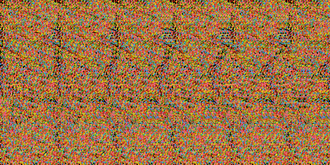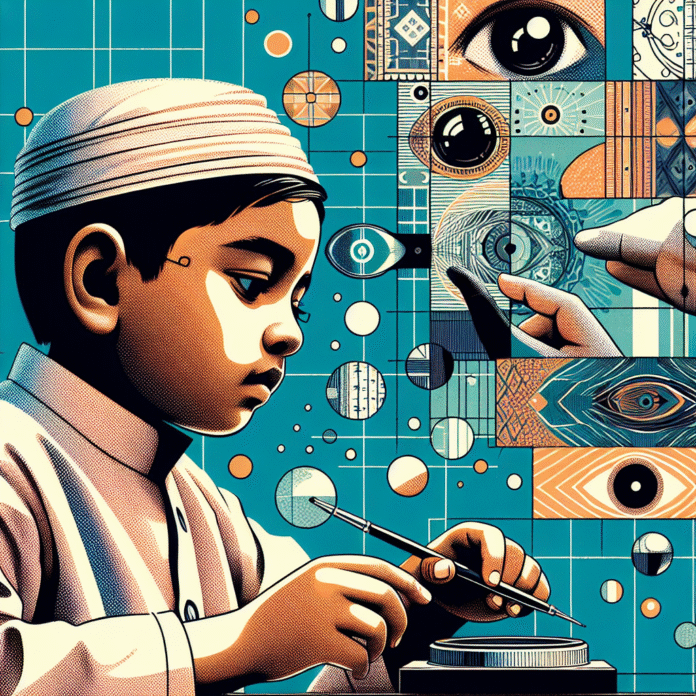Have you ever stared at an image made of seemingly meaningless dots until a hidden 3D picture magically appeared? If so, you’ve encountered a Random Dot Stereogram. These mesmerizing images are not only fun optical illusions but also a beautiful display of how our vision and brain work together to perceive depth. In this complete guide, we’ll break down what random dot stereograms are, how they work, and why they’re more than just visual tricks.

What is a Random Dot Stereogram?
A Random Dot Stereogram (RDS) is a type of image that appears as a field of random noise or dots at first glance. But when you focus on it in a certain way, a hidden 3D shape or scene pops out. It’s a type of autostereogram—which means you don’t need special glasses or equipment to see the 3D effect.
These images are cleverly designed to exploit the way our eyes naturally see depth. Instead of presenting slightly different images separately (like old-style stereoscopic photos), RDSs merge the two views in a single pattern. Your brain does the rest of the work, interpreting the depth from the two-dimensional image.
How Do Random Dot Stereograms Work?
Our brains perceive depth primarily through something called binocular disparity—the slight difference in images seen by each eye. A random dot stereogram encodes this disparity in a 2D image. When viewed correctly, your eyes slowly diverge or converge in a way that allows each eye to pick up slightly offset patterns. That’s when the hidden 3D shape appears.
It’s like magic, but it’s science. The creator of RDSs, Dr. Bela Julesz, developed them in 1959 as a way to test depth perception without recognizable objects. His work not only amazed the public but also advanced the understanding of human vision.
Tips to View a Random Dot Stereogram
If you’re new to viewing stereograms, don’t worry—it can be a bit tricky at first. Here are a few simple tips to help you see the hidden images:
- Relax your eyes: Hold the image at a comfortable distance and try to look “through” it, as if staring into the distance.
- Focus behind the image: You might have to cross your eyes a little or let them drift apart slightly. Avoid focusing directly on the dots.
- Start small: Try with easier stereograms first. Once you get the hang of it, you’ll be able to unlock more complex images.
- Use good lighting: Make sure the room is well-lit to help your eyes adjust more easily.

Applications of Random Dot Stereograms in Photography and Science
Random dot stereograms aren’t just fun images—they have practical applications too. In photography, they’re excellent tools for understanding depth perception and stereoscopic methods. For scientific and medical research, RDSs have been used to study vision, perception, and even diagnose eye conditions.
Their unique design also fascinates graphic designers and photographers who experiment with visual art and optical illusions. By learning how stereograms work, photographers can think more deeply about how to incorporate depth and visual interest into their compositions.
Creating Your Own Stereograms
Want to try making your own RDS? Today, there are several tools and softwares available online that let you create custom stereograms. You simply need a depth map (a grayscale image that shows distance) and a pattern texture. The software does the rest, encoding the depth map into a random dot pattern.
Popular tools you can explore include:
Even if you’re not a coder or designer, these platforms make it fun and easy to explore the world of stereograms.
Conclusion: More Than Meets the Eye
Random dot stereograms have fascinated viewers for decades—and they’re still just as intriguing today. What seems like a chaotic mess at first glance transforms into a multi-dimensional experience with just a little patience. Whether you’re a photographer exploring depth, an artist looking to experiment, or simply a curious observer, stereograms are a wonderful blend of art and science.
Now that you understand how they work, why not share the experience with your audience? Try including a stereogram in your next blog or photography piece, and give your readers something unexpected to discover.
Keywords to remember: Random Dot Stereogram, stereograms, 3D illusion images, depth perception, stereoscopic photography, autostereograms.


